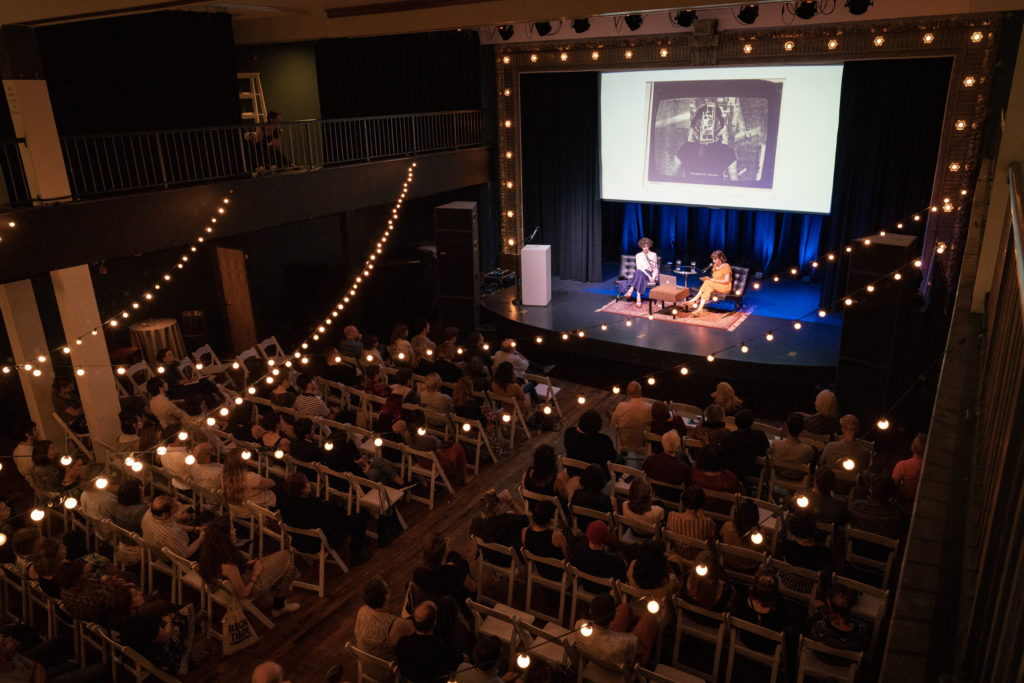FotoFocus at 10: An Oral History
Posted on December 17, 2020
As FotoFocus celebrates its first decade, we get the behind-the-scenes scoop of how it started—and what the future holds—from eight people who have lived it.
I. Origin Story
TOM SCHIFF, Founder, FotoFocus and CEO, Lightborne: The idea started maybe 12 years ago or so with James Crump, who was the curator of photography at the Cincinnati Art Museum. I mentioned to him that I thought there were never enough photography exhibits in Cincinnati. I thought, If we could have a photography festival in Cincinnati, that would elevate the photography profile in town and in the region, and we could have a reputation as being a go-to place for photography. And it would also provide an opportunity for a lot of other art organizations in town—other museums, nonprofits, university galleries, and commercial galleries—to have a time when they exhibit photography, and they could all work together and network and make the sum of parts greater than each individual element. That was the idea behind FotoFocus.
I didn’t know if we would ever get to the point of having such a big network. But James Crump was a very connected guy in New York City, and he helped bring a lot of A-listers to the team and to the project, and he engineered it from the world of photography outside of Cincinnati. And Mary Ellen Goeke, with her extensive museum experience and her expertise in managing projects, she had a very expansive approach to pulling the whole project together.
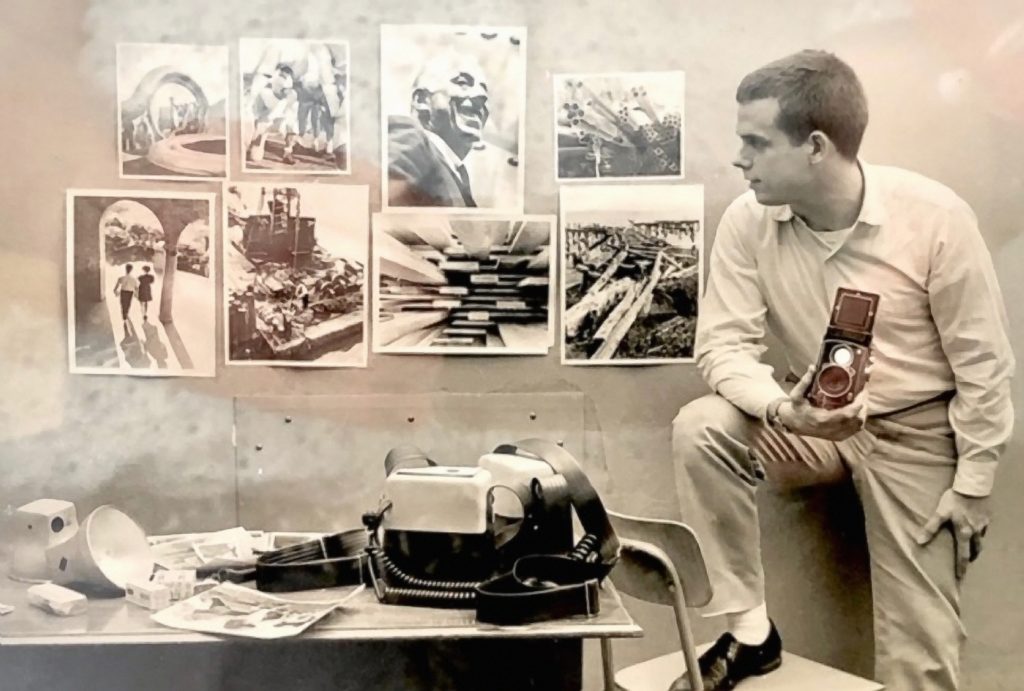
MARY ELLEN GOEKE, Executive Director, FotoFocus: We started out really organically. It was putting people together. Some people were very enthusiastic—we were always very lucky with how many organizations wanted to participate, educational institutions and museums.
RAPHAELA PLATOW, The Alice & Harris Weston Director and Chief Curator, Contemporary Arts Center: This idea of a photography festival emerged, and James Crump and I were the first two co-chairs of what we ended up calling FotoFocus. I remember sitting around a table in the basement of the Art Museum, brainstorming about a possible name for this thing that we wanted to lift out of nothing.
We wanted it to be a real celebration of photography, but at the same time a very rigorous investigation around certain themes that are important in the realm of photography. It was a celebration of both local talent and global talent.
MATT DISTEL, Exhibitions Director, The Carnegie: Outside of Mary Ellen, I think I might have been the first employee of FotoFocus. I knew Mary Ellen before, from when I worked at the Contemporary Arts Center. So when James Crump said, There’s this thing happening with a collector who is looking at getting a photo-based festival happening and he put me in touch with Mary Ellen—of course I jumped at any chance to work with her.
My role was basically to create a giant database of all the institutions in the Greater Cincinnati area that may be interested in participating, trying to get all of these different, varied arts organizations, from the midsize and larger formal ones to the smaller, almost informal spaces. They were just as interested in those as they were in the big ones—I found that very encouraging.
I’ve been in and around the art scene here, even at that time, for quite a while. And I always sort of thought of my focus as working to support and encourage artists and art spaces. I recall on a couple of occasions meeting with people, saying, I’m from this organization and we’re doing this and we’re interested in these things, a couple of places being like, Wow, why are you talking to us? We just have a room where we show some of our friends’ work sometimes. And that was coming from the ethos of the whole project, which was that this should be a large community-wide thing.
MARY ELLEN GOEKE: I think it gave it gravitas that all the major institutions were on board from the beginning. That cooperation was really important. But it was also all the response from the rest of the community. Carl Solway Gallery, Michael Lowe—all of these people in the community. It was the university galleries, too. That was a very crucial part for what we wanted to do. They all responded, and that made it succeed.
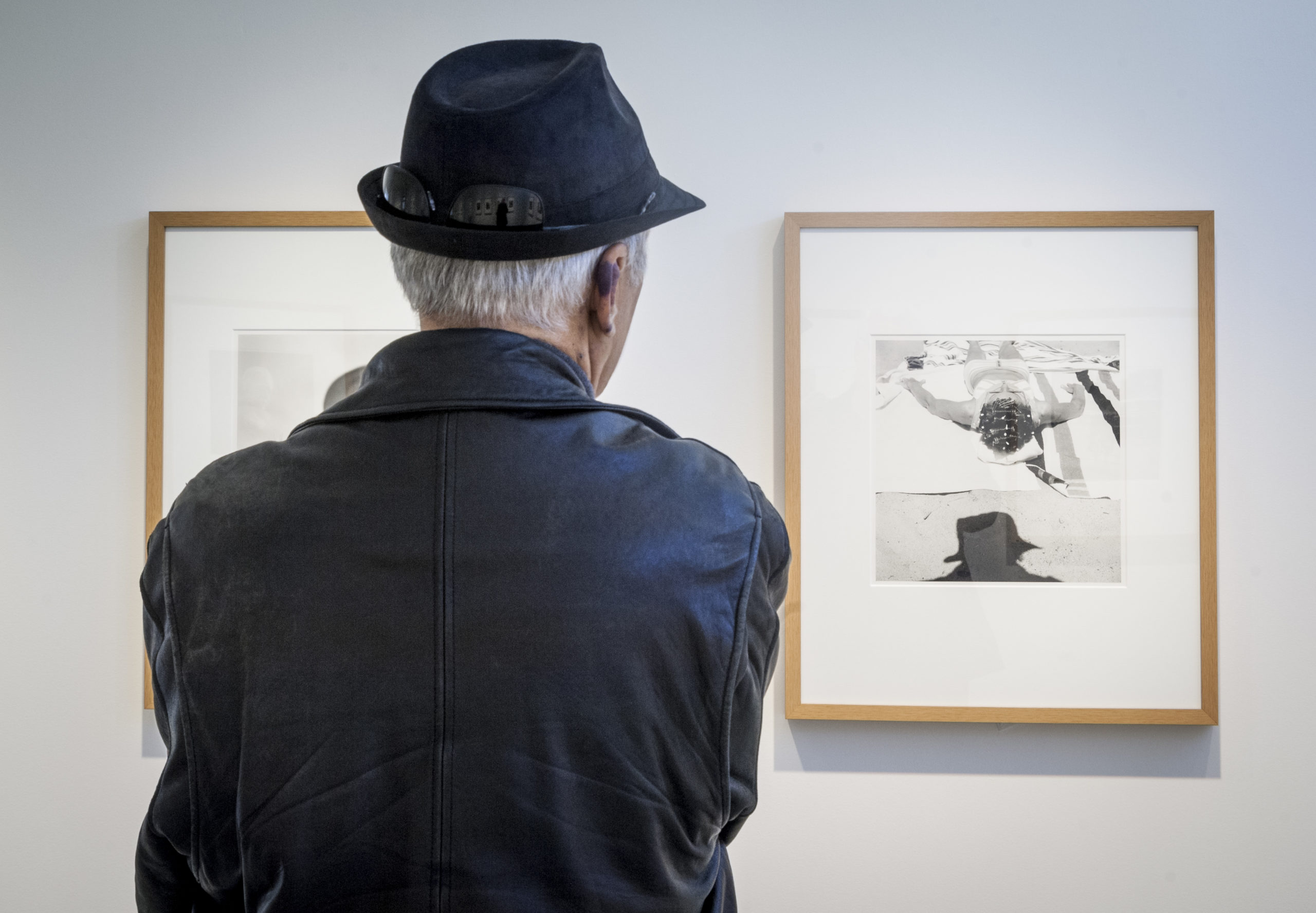
RAPHAELA PLATOW: It was really a grassroots effort, just a groundswell of excitement around lens-based arts. A lot of word of mouth, and a sharing of enthusiasm and passion.
One of the brilliant elements of this framework is that the institutions can propose their own projects. It is this notion that you’re working with the assets of the institutions—what you already have here in the area—and then shape it around a medium and a theme. So there was not that crazy shoring up of an entire institution.
DENNIS HARRINGTON, Director, Weston Art Gallery: The first year, I specifically chose an artist who we’d worked with before, Tony Luensman, who’s not a photographer but who utilized photography in his work. A large part of the gallery was a solo show, and it turned out to be truly, in my view, an amazing exhibition. In fact one of his images was featured on the cover of that publication they did in The New York Times. It was pretty damn impressive.
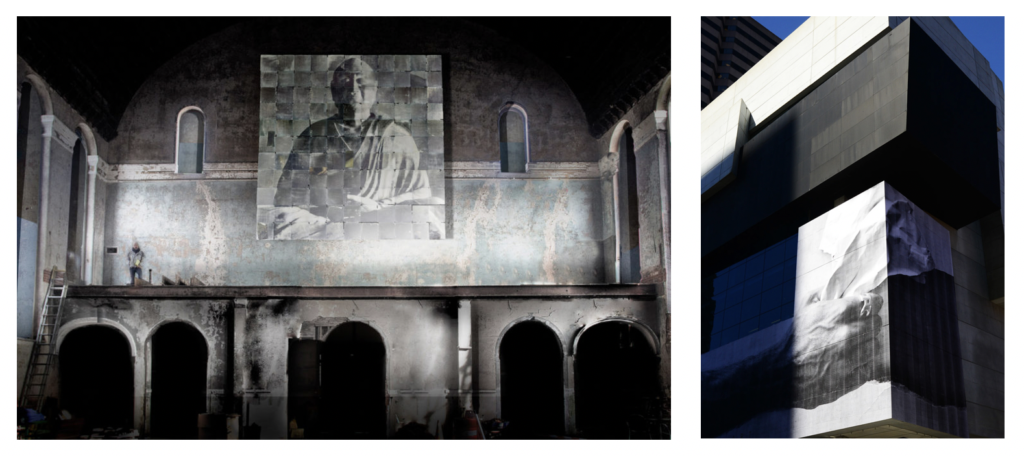
KEVIN MOORE: I first came to Cincinnati in 2008 or so to do this show Starburst at the Cincinnati Art Museum. That’s when I first got to know Mary Ellen and Tom. Mary Ellen and I would still always meet up at Paris Photo and have coffee. Then, later, this whole crew came to New York—Nancy, Mary Ellen, a couple of other people, too—with a mission, apparently, to bring me on for this position at FotoFocus. We had drinks or lunch or something, and they were talking about wanting to keep the momentum going in Cincinnati for photography, and I’m like, Sure, yeah, not even really understanding what I was agreeing to. And indeed there wasn’t really a plan. The word “biennial” had never been used. We went about starting to think what we would do in terms of programs.It finally evolved into this light-on-our-feet, no-bricks-and-mortar institution that would collaborate with other institutions, and we would do things in a very broad-minded and experimental way. So that’s how we got started in the first Biennial that I was a part of.
It was like two months before the 2014 Biennial was to start, and I didn’t even have anybody that was a registrar or installer or anything. We were roughing out pop-up spaces in Over-the-Rhine, and I finally started asking around to friends in Cincinnati, and they pointed me toward Carissa. And she showed up and life changed in that moment. But we were just the two of us showing up at 7:30 in the morning, handling, by ourselves, these seven- or eight-foot David Benjamin Sherry prints and installing the whole thing ourselves. It was totally nuts. And then cutting out a styrofoam faux door at Michael Lowe’s space to block the back storage area like 15 minutes before the opening of the show in his space, things like that.
After that we became much more institutionalized and had a little more lead time and were more buttoned-up. But in the beginning we were just doing everything ourselves. And it was fun, but it was also madness.
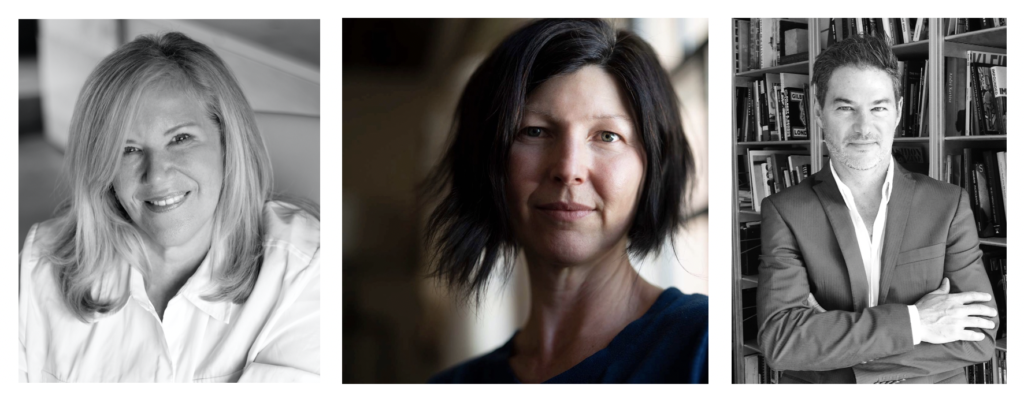
II. Modus Operandi
MATT DISTEL: It’s just such a big—not to use a politic word—but a big tent idea. It’s, Let’s bring in as many people as we can and support as many projects as we possibly can. FotoFocus has high-level projects with the Cincinnati Art Museum and the Contemporary Arts Center, etc., etc., but they are just as invested in the smaller galleries, in the nonprofit galleries and even in the commercial galleries, right down to individual artists and people who don’t have an official profit or nonprofit status. That has been the thing that’s kept me continuing to be a champion for FotoFocus as it’s moved along.
Another thing I think is a hallmark of FotoFocus is just the flexibility and the willingness to listen to ideas and hear them out and see where it takes them, and let things succeed or be interesting failures on their own.
They set up a structure that allows for experimentation. It puts a lot of freedom back to the people at the organizing institutions. I like the kind of chaos it brings, you can get these really wildly different types of projects. They pick their battles in terms of what they want to control; they know what they want out of a thing. And then they cut a check and give you all of that publicity and material support that is often just not available for midsize and smaller organizations.
TOM SCHIFF: I had been involved in bringing speakers and exhibits to town going back over 35 years ago with Images Gallery downtown [and then through Lightborne]. We’d bring photographers to town and they’d talk at the Art Museum and it was very successful. We were very proud of that.
CARISSA BARNARD, Deputy Director of Exhibitions and Programming, FotoFocus: The idea that there is this collective of people and ideas—that is in essence what is so remarkable about the program. That is a consistent thread running through the organization from top down. And I think that is a testament to the leadership and the founders. That’s how Tom envisioned the organization, and that is how Mary Ellen has run it.
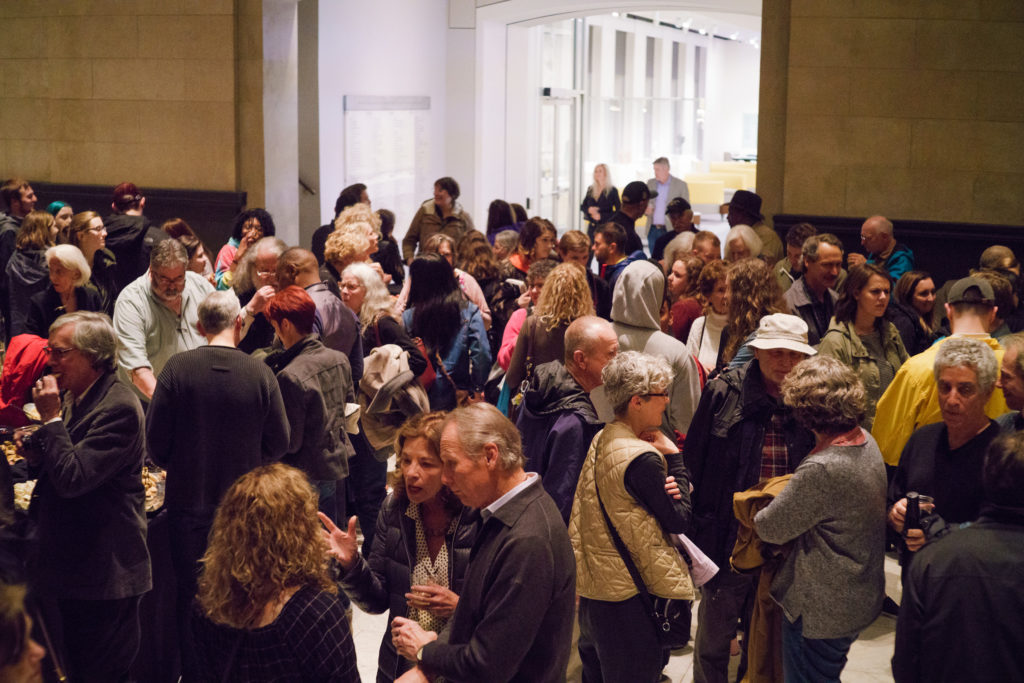
MARY ELLEN GOEKE: Tom’s approach was that there would be a few more venues all around the community. The Evendale Arts Center. Fairfield. Not just in the downtown district or the east-side suburbs or Clifton, but really all over. More and more, it lets people know we are really blessed and rich in organizations throughout this area.
CARISSA BARNARD: Kevin and I have advocated for a more open translation of lens-based, moving the focus not away from photography, but expanding the focus. I think that has allowed us to be more brave about some of the works that we went to show, and also more inclusive to artists. It’s about the use of a lens, and we really push that in certain aspects.
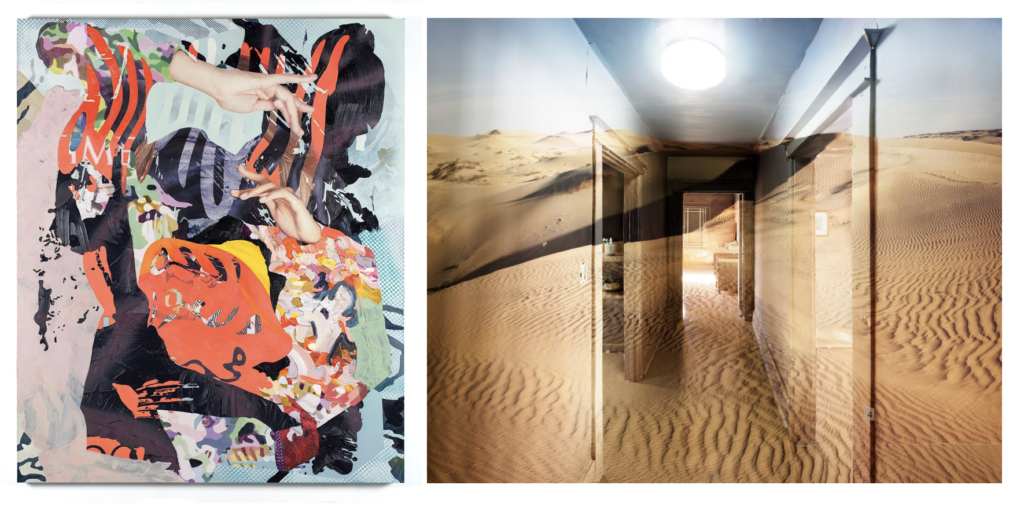
RAPHAELA PLATOW: It’s not this structure that imposes a particular vision. The vision is really created by a lot of different producers, so to speak, that all contribute their own ideas. The theme holds it all together, but within that same theme there are just so many different iterations, and that makes it really brilliant and really powerful because there’s a lot of room for everyone to contribute authentically, and so we are not just these shells are the spaces where the Biennial happens, we are co-producers and co-curators of it all.
MARY ELLEN GOEKE: There’s a reason we call our venues our partners. We use that terminology a lot—it’s how we look at all the other visual arts organizations. That’s what helps make FotoFocus unique.
RAPHAELA PLATOW: FotoFocus has been so good just getting people in the community together that typically, unfortunately, despite the fact that we are all in the arts, don’t get together naturally as much as we do when we were all preparing for the Biennial. They’ve been really amazing conveners.
BRITT SALVESEN, Curator, Wallis Annenberg Photography Department and Prints and Drawings Department, LACMA: In addition to the top-notch intelligence and creativity of the whole enterprise, the hospitality is amazing. I mean, I really don’t ever remember feeling as welcomed in such a friendly and generous way, both to the city and to the people. It is really, really exceptional.
At the most recent event that I attended, I was coming on my own, and many of the other audience members were local. People were coming at it from many different perspectives. I really had some great conversations in the coffee breaks and before and after the social aspects of the programming. It made me realize another thing that FotoFocus has done is foster community. Some people, this is the first event they’ve attended. But others were by now loyal supporters. And I thought that combination was itself telling. And there’s momentum, there’s community there, and it’s quite wide-ranging and large. So that was a big part of the pleasure of being there for me.
It’s never just about what happens in the auditorium. It’s much more than that, and it’s a total experience that they’re very aware of and gracious about.
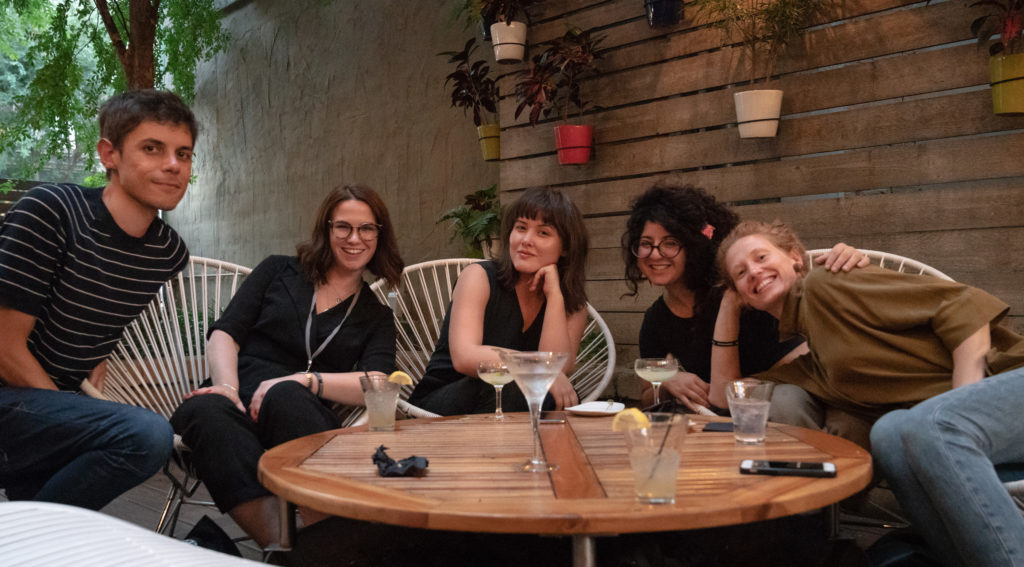
III. Stick With the Program
CARISSA BARNARD: FotoFocus has presented an enormous amount of projects, worked with over 1,500 participants and given over 500 grants. Since 2014, the Participating Venues have grown from 60 to over 100. The numbers are just astronomical.
TOM SCHIFF: I think what happened is it took a while for the community to recognize FotoFocus. The first time it came about, people didn’t know what it was, and they didn’t seem interested in it, and it was kind of a small operation. Then every two years, when the next FotoFocus came around, the audience grew and the venues became more comfortable working with FotoFocus, and things have just gotten bigger and better since then.
KEVIN MOORE: Having a theme is an important thing as we’ve expanded to more and more Participating Venues—giving them a theme to respond to has been very generative. I think in some ways they get interested in directions and ideas that they would never have otherwise.
I think the Open Archive theme that we did in 2018 was a particularly fruitful theme. Everybody had an idea for archive, that was very productive. The one before that, The Undocument, was a confusing theme to everybody. [laughs]
Photography is a super interesting medium because it’s so messy and it’s so related to everything else.
CARISSA BARNARD: A lot of people think FotoFocus is just the Biennial. But since we started, we’ve also had a Lecture Series, which was originally started by Tom Schiff. That this organization was founded upon the idea of conversation is, I think, at the heart of our organization. The dialogue component is as important as what we do in terms of presenting artwork. It is inextricably linked to FotoFocus.
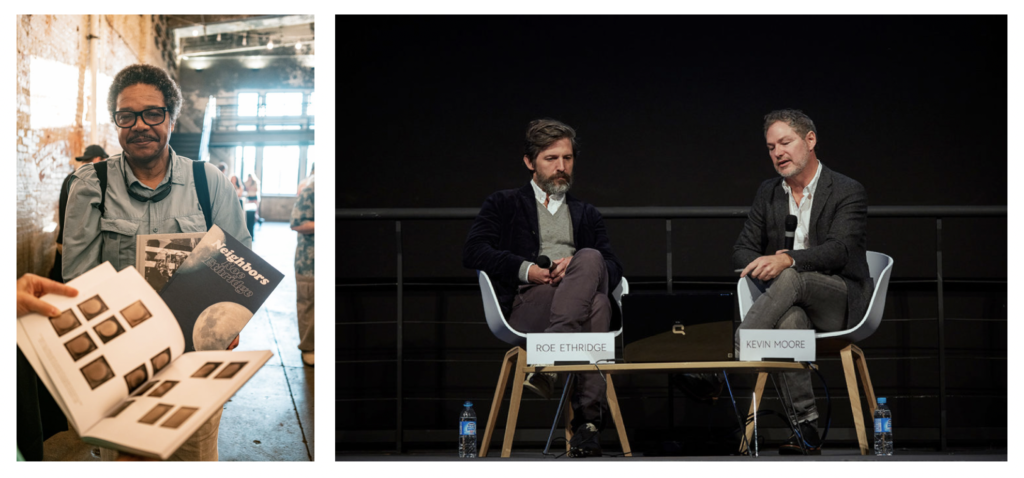
MARY ELLEN GOEKE: The list is amazing of the speakers that have come through. Someone like Zoe Leonard, who was having this big show at the Whitney and was receiving a lot of attention during that time, she was a perfect get. Kevin Moore who really helps us get those major artists here. I can’t even think of many artists who haven’t accepted, from John Waters and William Wegman and Jeff Rosenheim at the Met. I think that the programming has become well-known to people in photography.
KEVIN MOORE: The first Symposium was around Mapplethorpe. That was the 25-year anniversary of that controversy. I would say with that Symposium we really hit our stride. The way we set up the lectures, the people we invited, just the whole organization of the weekend was a great success for us.
BRITT SALVESEN: My first direct participation was in the really ambitious Symposium they did around the anniversary of Robert Mapplethorpe’s exhibition The Perfect Moment and the culture wars, because I was involved in bringing the Mapplethorpe archive to LACMA and the Getty Museum and the Getty Research Institute. The events in Cincinnati were really informative. Kevin and the team brought together people who were very familiar with Mapplethorpe’s work—of a few generations. So it was a way to reflect with the people who were really there and close with him, but also on his influence.
The quality of the programming [keeps me returning to FotoFocus]. I love the way the programming always brings together artists, like I said, of different generations, but also curators, collectors, scholars, critics. Photography is part of the art world, but it’s also always more than that because it’s a utilitarian medium, and one that we all engage with. I think in a way it’s limiting to just contain it within the art world. And what FotoFocus, while being an arts and culture entity, also always recognizes is the impact of photography beyond that rarefied realm. I think that makes it wide-ranging, accessible, and provocative.
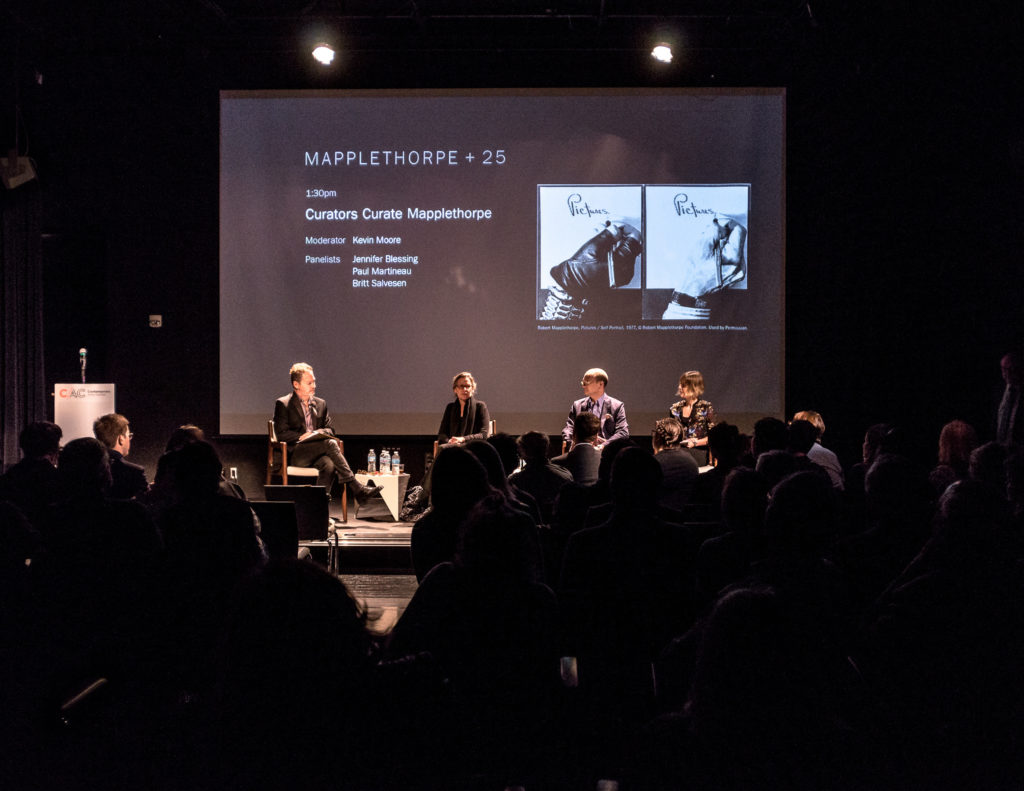
KEVIN MOORE: I have to say, we do things in Cincinnati two years, three years in advance of seeing it actually make its way into MoMA or someplace like that. And that’s partly because they’re a big ship and they don’t turn very quickly. I know those curators well and I know they’re thinking about a lot of things I’m thinking about, but they’re just not allowed to do it. And I get to do a show with Mamma Andersson—we were showing her photo archives, but it makes a very important point that even a painter as imaginative as her looks at photographs, collects them, keeps them in all forms. And those make their way into her paintings.
CARISSA BARNARD: Mary Ellen has set up this flexible working environment so we are a very small team making decisions about the direction. And then we can collaborate and partner and work with people to help bring the ideas to life. There is freedom in that model, and it is reflected in the organization’s offerings and how we engage with outside parties. We are not naysayers. We are solutions-oriented as a team. So we’re going to try to figure out how to bring the craziest proposals to life, without a ton of barriers in our way. We want to work with brave ideas and bring unique things to life and do it in a short timeline, because that’s kind of how we work.
MARY ELLEN GOEKE: We have our own small group of FotoFocus-curated projects, but we don’t dictate what the venues do. What has been amazing in the five Biennials is the quality and the response. It’s just really impressive.
DENNIS HARRINGTON: We’ve [partnered as a space for FotoFocus-curated exhibitions] for the last two Biennials. It’s always been a challenge for FotoFocus because they don’t have a physical space to operate out of.
CARISSA BARNARD: Doing an open call for a juried exhibition of regional artists was always on the list, and it will return. It was about finding the right partner to do it. With The Carnegie, we could host the Symposium and then expand upon it with that connected exhibition in the same space. That was, for us, kind of a pivotal improvement on the Symposium model.
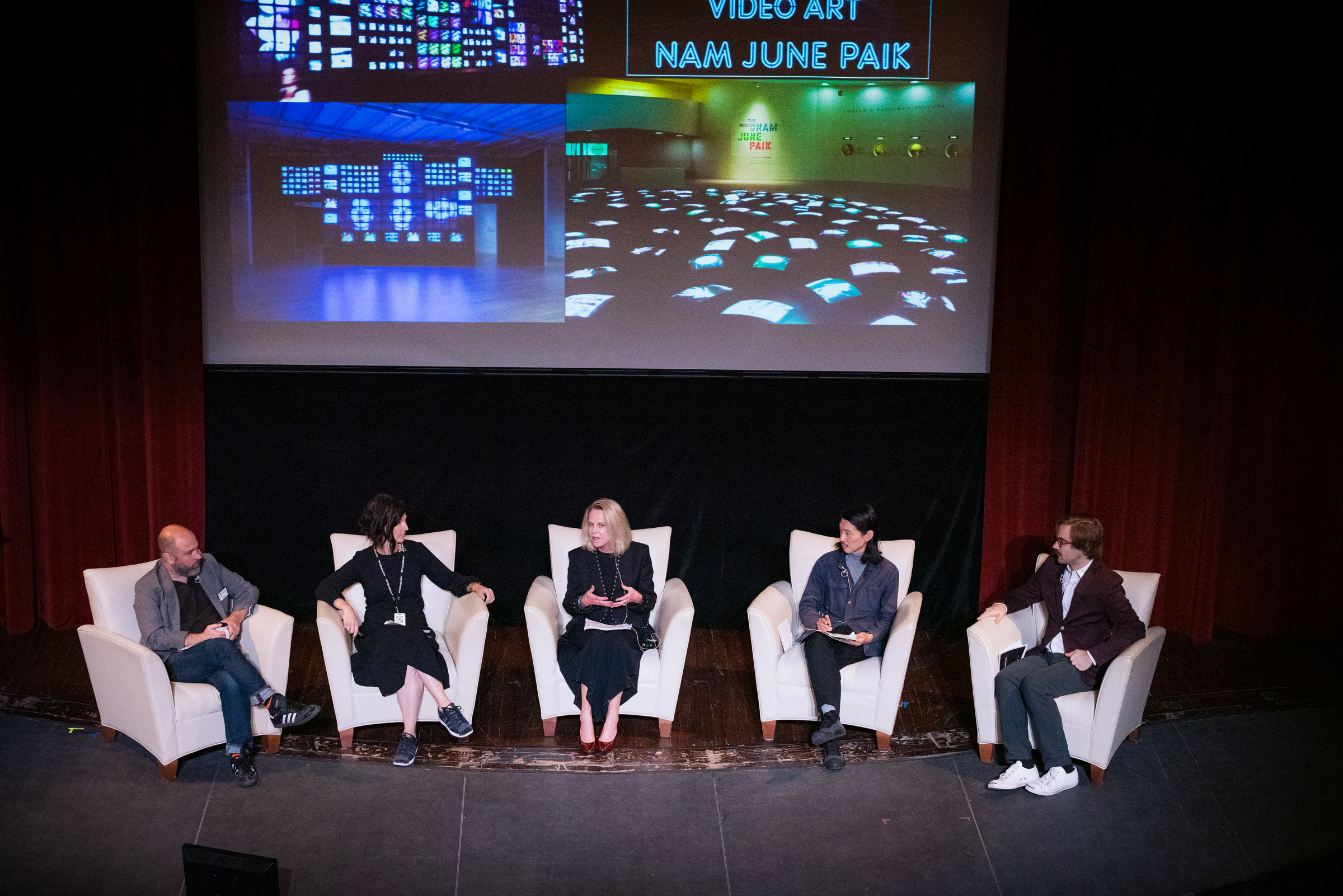
MATT DISTEL: The [AutoUpdate Symposium] was our first kind of big, full collaboration. I think it exposed The Carnegie to a much bigger audience of artists and curators and critics and writers and thinkers and collectors than we had seen with just our regular programming.
The Symposium itself was this pretty star-studded gala of important writers and thinkers and artists thinking around how images move around the world. Strategically what was so cool about it was FotoFocus had planned this regional juried show with some nutty number of artists from this region, who then have their work exposed not just to the audience, but to all the speakers. It’s hard to measure the outcomes of things like that, but I think they are intrinsically valuable to expose artists of the region to people from outside who can offer them new opportunities.They just as easily could have selected a fancy-pants national artist and given them a solo show.
CARISSA BARNARD: FotoFocus happens here; we are based here. But there is this other component on a national and international scale.
We’ve had participants like Makeda Best—she was in the Second Century Symposium, and then she came back to the Symposium a year later, just to hang out as a guest. Britt Salvesen has done the same thing. We have people coming in, logging into Zoom calls who have been connected to FotoFocus since 2012 or 2014. There’s this—I know it’s good. I know it’s good. Because there is that level of engagement.
IV. The Pivot
MATT DISTEL: Yeah, 2020 is jacked up. [laughs] Not to seem too fawning here, but FotoFocus came to the conclusion very early on that they were going to honor the financial commitments they made, regardless of if the show happened or not. And I’m a hard-hearted cynical robot, but it almost brought a tear to my eye when Carissa called me to tell me that. It probably saved my job. Maybe saved the programs. It was a big deal. And the fact that they didn’t put any restrictions on it, other than, like, If you do something photo-based let us know so we can help you. If you do something with the money that looks like an exhibition, we’ll help you with that. And they’re continuing to do that.
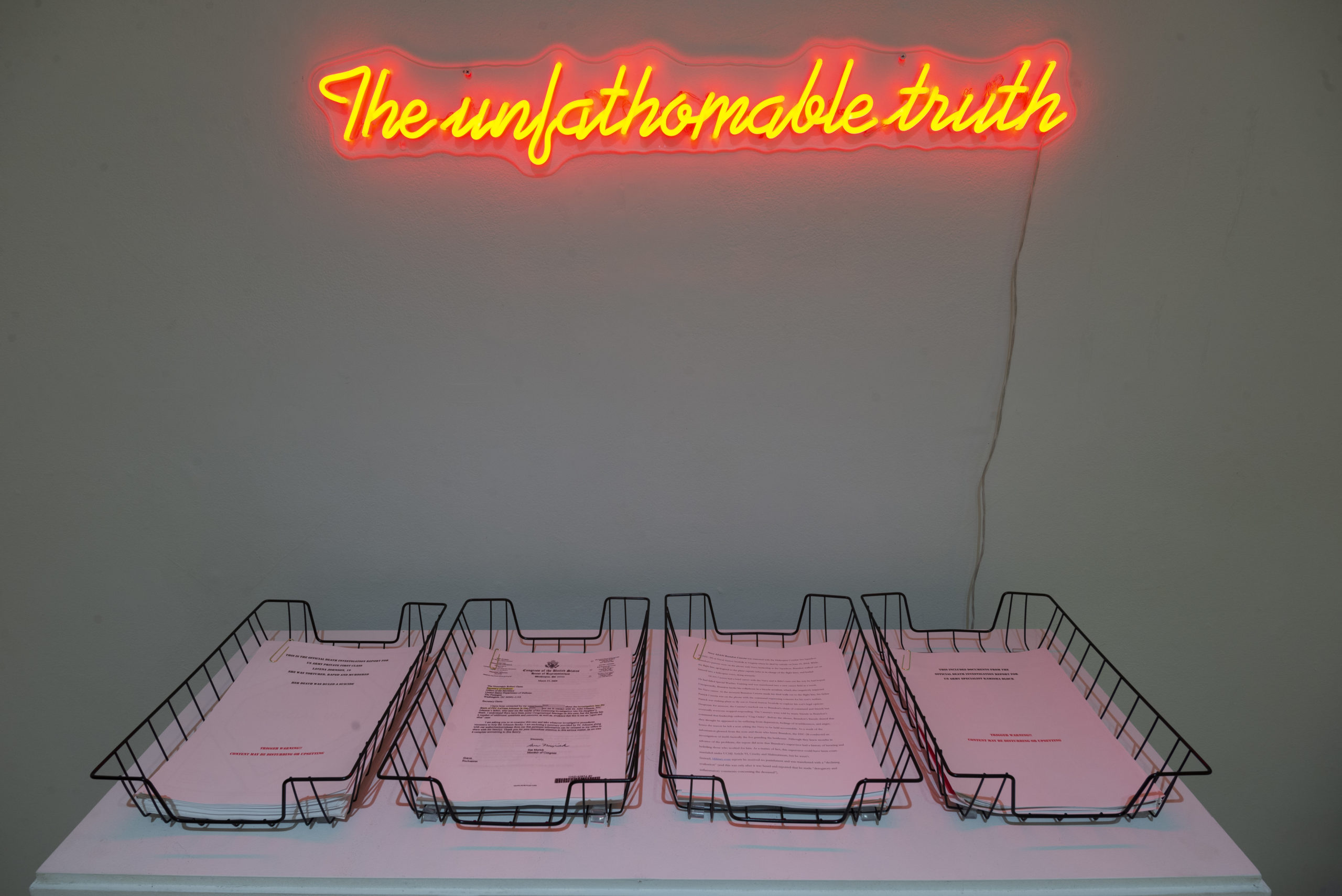
MARY ELLEN GOEKE: The other thing that separates us from other types of festivals—and that we’re so grateful for—is that we can actually make grants to help fund Biennial exhibitions, and support the venues or the curators, as well as the individuals and artists who are participating in it. For this particular year, it was unclear who would be able to be open and who would do things, and so it seemed appropriate that in this year we offered the Emergency Art Grants, and also that we would do as much as we can to market and promote any shows that still were able to go forward.
MATT DISTEL: The show we have up now is not at all what we plan to do in 2020. We were going to be part of a huge multi-venue project that the Contemporary Art Center was spearheading. When that went away, we shifted and we focused on artists in the region and we did a show with some Art Academy grads who didn’t get a chance to show their thesis work.
DENNIS HARRINGTON: I was from the start familiar with Tom’s generosity and commitment, of course. Each investment on his part and sharing his love of photography with the community at large—it’s really amazing. Particularly this year, with the pandemic. Allowing all of the organizations that had received grants to keep those grants, and then supplying additional funds for creating videos. It’s all been tremendously helpful for us.
KEVIN MOORE: I said back in April when we were trying to figure out what we were doing with the pandemic, You know: No one is going anywhere. It doesn’t matter if you’re in New York, you can be in a remote Canada now. All geography, all time is collapsed. Going forward we’re going to keep a lot of this hybrid online experience. It’s been developed in extraordinary ways now to compensate for the situation. A lot of that is going to carry over, and the online experience will be even more important. It’s a very interesting moment for people who are experimental. Instead of thinking how this is hampering what we would like to do, it’s: How does it open up other possibilities?
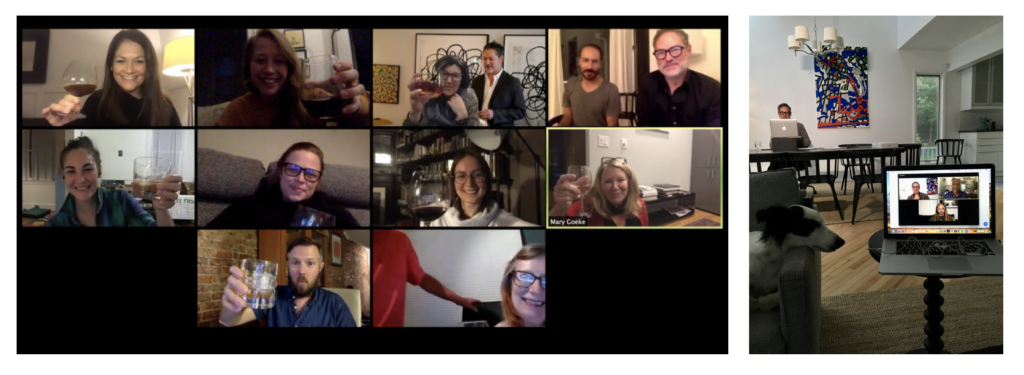
BRITT SALVESEN: We are all being forced to move into the virtual realm and think about ways to engage even broader audiences through programming that is not site-specific.
MARY ELLEN GOEKE: If you’re agile, you can say: Okay, we have to come up with some programs we have to figure out what we can do next that’s going to be significant, and not just something we have to do as a substitute. It has to be something individuals would want to come to no matter what the circumstances were.
V. Future Tense
KEVIN MOORE: We’re going from having been an organization that does something every two years to being an organization that has a Symposium in the off year and a Spring Lecture, to one that now has year-round programming.
CARISSA BARNARD: We want to remain relatively compact and agile, so we’re trying to make all of this happen with a really small, competent team. We have some limitations. Right now, I think for the future of FotoFocus, we are looking to grow that team, our offerings, our contributions, our publications—every arm—and to see what is sustainable for us, while always maintaining this imperative founder’s vision to partner and collaborate with our region’s venues and artists.
KEVIN MOORE: It’s good to not have specific expectations when you start fresh with something, especially when you are completely making up an institution. But I think it is doing what we had secretly imagined it would do, which is become an international presence. Right now we’re doing Lens Mix, for which I’ve invited a total of six people to be in conversation, and it’s the first time ever that we are six-for-six saying yes. It’s easier, of course, to just open your laptop and go on a Zoom call, but it’s also based on a reputation that we’ve built at this point. Now, when I invite somebody, I can name-drop a ton of amazing people—MoMA curators and international artists and all kinds of people and say they participated, would you join us for this. So the word is out there.
TOM SCHIFF: FotoFocus is bringing photographers with international reputations to Cincinnati. It’s an opportunity to bring these people to town. When people from Cincinnati travel to New York and Los Angeles and Europe they might run into the work of these photographers, but it’s a great opportunity when they come here and they can interact with them in Cincinnati.
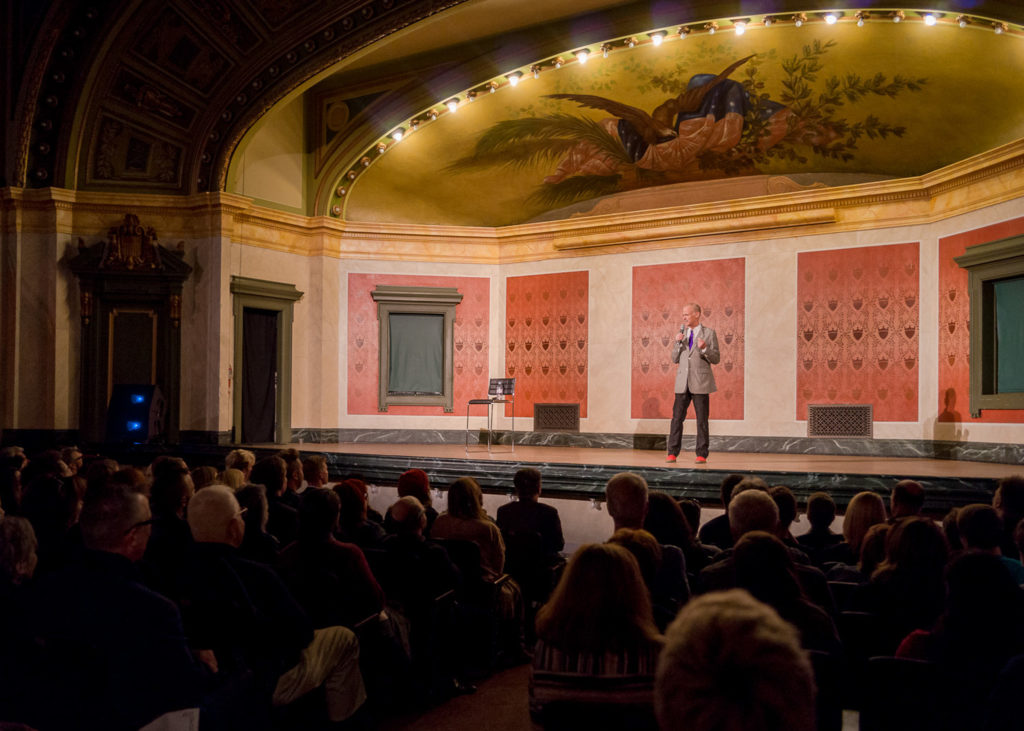
MATT DISTEL: It’s just how active and activated the gallery scene feels during those FotoFocus times. Obviously we’re missing that this year. It just feels like you could walk into any space and encounter a really high-quality exhibition because their support can make it that way. It’s a really wonderful time to be out looking at art in and around Cincinnati when FotoFocus is happening. It’s really easy to just go: Oh, hey, there’s a thing.
DENNIS HARRINGTON: I hope for FotoFocus’s future. The opportunity is still there to create this kind of national or international photo fair that brings people in from around the country and beyond. But it’s a tough nut to crack. And it’s unfortunate with the pandemic. This year could have been a year where FotoFocus was really starting to draw more visitors from outside the region.
BRITT SALVESEN: There are very few entities that had a regional origin that very quickly gained a national or international stature. And in some cases, that has been through sheer scale, like large portfolio reviews. But I think with FotoFocus, it’s really about quality, and about the perceptiveness of the principals. I’m thinking about Kevin and Mary Ellen—and the rest of the team, as well—but they’re both super curious and perceptive individuals who are paying attention to what’s happening, both regionally but also beyond. And they are a great team in that way. They are present at international gatherings; they attend other events. Part of the way I stay in touch with FotoFocus is by coming into contact with Kevin and Mary Ellen at other events and catching up with them and talking about what’s striking us at any given moment.
KEVIN MOORE: I think we are a very special group. It’s special just for the way it’s formed organically and the people we’ve added and the way we’ve held a center of certain, core people—and how that has been the generating force that has made us develop in a certain way.
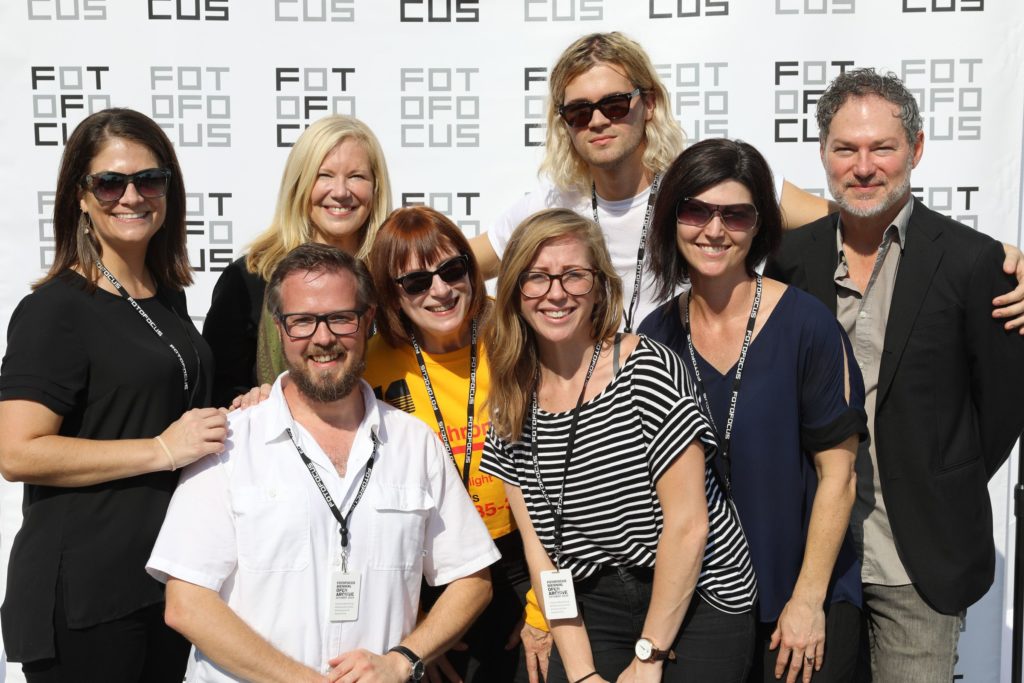
MARY ELLEN GOEKE: We realized our model is really about a low footprint, organizationally. We have a small staff, and we’d always look toward working with other venues and so forth. That’s been terrific. But as we’ve grown, we’ve realized that there’s so much we would like to do with regards to, for example, artist residencies or working with film. There are so many potential collaborations. There is an expansion in the art form that we need to be responsive to.
Photography has changed and the conversation around photography and its various platforms has grown tremendously in the last 10 years. We have to remain agile in the next 10 years to that continued evolution of the form. We have to be able to be quick, and really responsive, to what we are finding and hearing and how people are reacting to it. I think that we have proven that we can do that.
FotoFocus collaborates—locally, nationally, and internationally—to present and support photography and lens-based projects that are accessible, enriching, and engaging to a diverse public. FotoFocus inspires conversations about the world through the art of photography and film, via its partnerships and signature programming including the FotoFocus Biennial, FotoFocus Symposium, FotoFocus Film Program, and FotoFocus Lecture and Visiting Artist Series.
